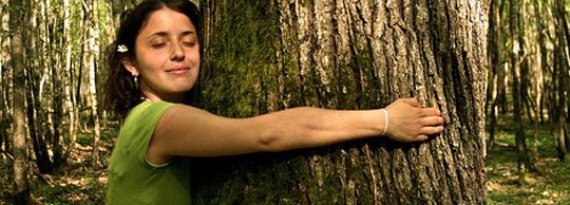 The Netherlands is not among the top hundred countries with the highest tree density, whether per resident or per square kilometre. This is clear from the fi rst world tree density map. Forest researcher Geerten Hengeveld and Gert-Jan Nabuurs worked on Alterra’s behalf on the map, which drew a lot of attention last week through Nature. The researchers made their map in the basis of regression models and a vast number (430,000) of inventories of trees around the world. Professor Nabuurs (European forests)
The Netherlands is not among the top hundred countries with the highest tree density, whether per resident or per square kilometre. This is clear from the fi rst world tree density map. Forest researcher Geerten Hengeveld and Gert-Jan Nabuurs worked on Alterra’s behalf on the map, which drew a lot of attention last week through Nature. The researchers made their map in the basis of regression models and a vast number (430,000) of inventories of trees around the world. Professor Nabuurs (European forests)
is responsible for most of those ground-based surveys. ‘Between 2004 and 2007 I collected 150,000 surveys for Europe. The strength of our study is that we have brought together these sorts of databases worldwide.’ Using regression analysis, this survey data was correlated with satellite records and information about land use, topography and climate. These relations provide the basis for estimates of tree density around the world. The result of these calculations threw up some remarkable new data. Worldwide there are 3,040,288,194,283 trees of more than ten centimetres think at chest height. That is 3040 billion. The Netherlands accounts for a third of a billion of them – very few, in other words. Russia has by far the most trees: one in five trees grows on Russian soil: 4461 per Russian citizen. After Russia come Canada and Brazil. But numbers are not everything. The greatest density of trees is found in Europe. Finland is the country with the most trees per square metre: 72644. That just so happens to mean precisely the same number of trees per resident as in Russia: 4461.
According to the researchers there are 422 trees on our planet per human earth-dweller. That is ten times less than in Finland or Russia, but 20 times more than what we have to make do with in our country. The latest estimate comes out seven times higher than previous ones. This estimate was disputed, says Nabuurs, and was pretty rough. ‘The nice thing about our work is that we now know so much more about the structure and dynamics of a forest. We know, for instance, how many cubic metres of wood there are in a forest, but that is not enough to be able to estimate the potential CO2 storage capacity. The number of trees and the dynamics there tell you much more about the state of a forest.’


